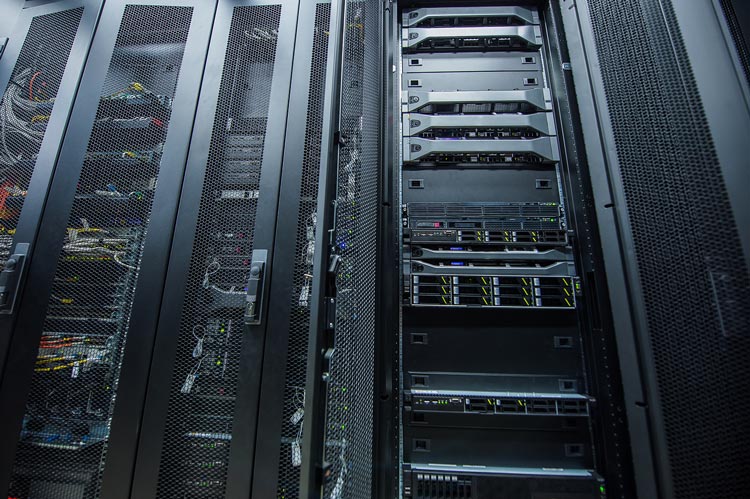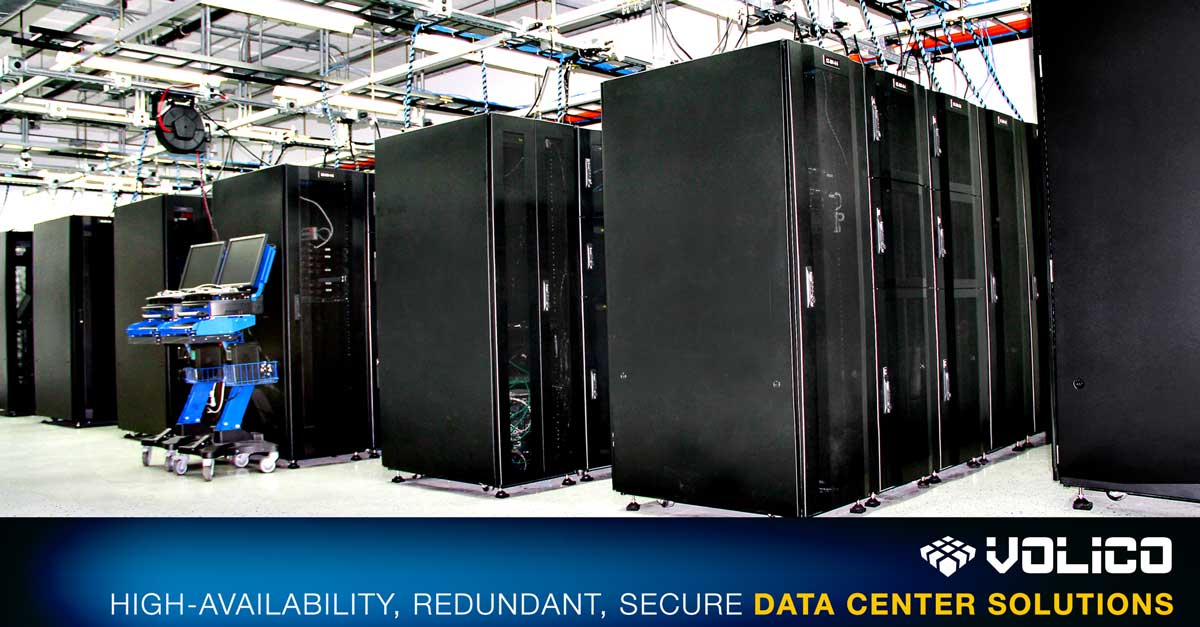Growth is essential to the long-term of any business or organization.
With rapid growth, however, comes the need to expand your data storage capacity.
While your IT infrastructure can handle your business’ data volume during the initial phases, most organizations struggle to store data effectively when they scale to the next level.
And, if the company doesn’t find a reliable solution quickly, it’ll have to deal with slow, ineffective processes sooner or later.
So, any forward-thinking organization should consider moving to a colocation facility like Volico Data Centers instead of relying on its own on-premise data center.
In this blog post, we will explore the benefits of moving on-premises workloads to colocation and why it may be the right choice for your organization.
Why Move Workloads from On-Premises Data Centers to Colocation?
Colocation Is Usually More Cost-Effective
Building a small on-site data center can cost about $500,000. That’s quite a significant sum of money. Plus, data center equipment requires regular upgrades, maintenance, and replacement, driving costs through the roof.
Maintaining an on-premise data storage facility means hiring IT technicians to ensure everything runs smoothly.
The scenario changes when you migrate to a colocation data center. First, you don’t have to worry about capital and operational expenses. On top of that, you won’t spend on IT personnel.
Further, you can leverage start-of-the-art data storage technology like Ceph, ensuring you never have to deal with planned or unplanned outages.
Colocation Offers Better Compliance
As your business grows, so does the need to comply with regulations. Most organizations aren’t ready for compliance. And if they are, navigating compliance standards such as HITECH, HIPAA, DSS, or PCI can still be challenging.
Moving to a collation data center can help solve this problem. You want to check if the facility is compliant before migrating, though.
Speaking of compliance, Volico data centers are HIPAA, PCI, SSAE 16 (SOC 1), and Type II compliant.
Compliance is in our operational DNA because we understand what it means to ensure that your business complies with industry standards.
Colocation Has Better Security
The last thing you want to hit your company is a data breach. Check out the data breach stats below:
- 88% of organizations now consider cybersecurity a business risk (Gartner)
- 45% of US companies have experienced a data breach (Thales)
- 62% of companies in the Americas have experienced a data breach within the last year (KPMG)
- 28 percent of data breaches affected small businesses (Verizon)
- The average data breach in the United States costs $4.24 million (IBM)
Your business doesn’t have to be part of these depressing stats. Migrating to a colocation provider allows you to leverage robust security, keeping your organization safe from data breaches.
Enhanced Operation Visibility
Contrary to what you may think, storing data in an on-premise facility doesn’t offer the best transparency to your IT system.
Sure, you can inspect your services physically. Still, that’s nowhere near the level of transparency you can get with colocation data center infrastructure management (DCIM) tools.
These offer smart monitoring, enabling you to know how your equipment and network perform. In addition, the tools allow you to see how your IT infrastructure is utilizing bandwidth and consuming power.
And the beauty of it is that migrating to a collocated facility enables you to monitor data in real-time, something you don’t get with an onsite data center.
Colocation Offers Low Latency
The delay that happens when data is sent between two sites is referred to as latency. The performance of an application can be significantly impacted by latency in the context of IT infrastructure. High latency can have a significant negative impact on applications that demand real-time data processing, such as online gaming or financial trading.
For applications that demand real-time data processing or low-latency connectivity, colocation facilities can offer high levels of network performance and low latency. The user-to-data distance is kept as low as possible by utilizing high-speed, redundant network connections. Colocation facilities can minimize latency and enhance application performance by minimizing the amount of distance that data must travel.
You Can Leverage Cloud Connectivity
Indeed, you can integrate your on-premises infrastructure with a cloud platform. However, that depends on the availability of the service. Still, you don’t have to spend money to install new cables to your on-premise data center.
Instead, you can migrate to a colocation facility to enjoy hybrid and multi-cloud connectivity without leaving a hole in your budget.
Better yet, you can shift to the cloud and use virtual machines instead of physical servers. You’ll save significant sums of money with either option while leveraging a colocation data center’s greater versatility and scalability.
Scalability
You want to immediately store the data your organization is generating before your on-premise infrastructure can no longer store the data your organization is generating. While you can add new capacity, the entire process is time-coming and overwhelming to implement.
You can miss opportunities while waiting to set up the additional capacity for your on-premise solution.
Moving to a colocation data center is a more practical and sustainable way of expanding capacity affordably. So, instead of installing additional power and cooling apparatus, you’re better off moving to a cloud or collocated environment.
Colocation Can Include Managed Services
Running an on-premises data storage facility can mean hiring a bloated IT workforce for maintenance and updates.
While this may work for your organization, it hinders growth or innovation.
Organizations can free up their IT personnel to attend to more valuable tasks by shifting to a cloud or colocation provider.
Volico offers round-the-clock support and regular maintenance to your collocated servers, ensuring operational efficiency. Besides, partnering allows you to maintain a lean IT department, translating to more savings in the long term.
Uptime Reliability
Planned and unplanned downtime can cause your business thousands of dollars in lost opportunities, productivity, and revenue.
Losing access to business-critical data and applications can result in fatal long-term consequences, especially if it causes customer frustration. And the sad reality is that most on-premise setups don’t have the capacity and redundancies to deliver uptime reliability.
Colocation data centers offer a serious upgrade to this problem through a robust infrastructure and a higher SLA uptime.
Shifting to a colocation facility ensures your business doesn’t have to rely on a single cloud vendor and can instead access multiple connectivity options.
Energy Efficiency
We’re not saying that on-premise data centers are not energy efficient. Still, most on site-facility become less efficient because of insufficient or outdated infrastructure.
Most of them were initially designed to be something other than data centers, making it hard to keep up with the latest cooling and power innovations.
Migrating to a colocation data center allows organizations to leverage the latest, energy efficiency applications to deploy their IT infrastructure.
The overall benefit is a reduced carbon footprint, a positive development for a world moving toward sustainable energy consumption.
Edge Computing in Colocation Facilities
In contrast to transmitting all data to one point for processing, edge computing refers to the practice of processing and analyzing data closer to the source. This method can decrease latency and boost application performance, especially for programs that need to handle data in real-time.
Due to their infrastructure and skill in implementing edge computing solutions, colocation facilities are well-positioned to benefit from edge computing. Organizations can lower latency and boost application performance while lowering the expense and complexity of managing their own edge computing infrastructure by using edge computing solutions in colocation facilities.
Furthermore, by minimizing reliance on a centralized data center, edge computing can enhance the dependability and availability of applications. Edge computing can be used in the event of a failure at a centralized data center.
Better Disaster Management
A natural disaster can cripple your organization’s operations, especially if you’re running an on-premises data center. Most on-site facilities, for instance, can’t handle flash floods, typhoons, or extended power loss.
Volico’s FLL1 – Fort Lauderdale data center is a category five hurricane resistant, complete with gas-based inert fire suppression. In addition, it uses 2N+X Smart-Grid redundant power and a 2N+X Smart-Grid redundant cooling infrastructure.
Shifting to a data center like FLL1 Fort Lauderdale allows you to safeguard your organization’s essential applications and environment availability in a disaster, ensuring business continuity.
Conclusion
In summary, moving your on-premises workloads to a colocation facility can offer numerous benefits, including improved scalability, reliability, security, cost-effectiveness, and performance. By leveraging the infrastructure and services provided by a colocation facility, you can focus on your core business operations and leave the IT infrastructure to the experts. If you’re considering colocation for your organization, it’s important to choose a provider that meets your specific requirements and has a proven track record of reliability and security.
Volico Data Centers runs several data centers providing colocation and cloud service designed to help businesses reap the benefits of moving from on-premises facilities to a future-proof data storage solution.
We’re here for you whether you’re looking for a reliable colocation partner or are eager to learn more about why you should move to a hybrid environment. Feel free to call us at 888 865 4261 or chat with one of our colocation experts to discuss your needs.












